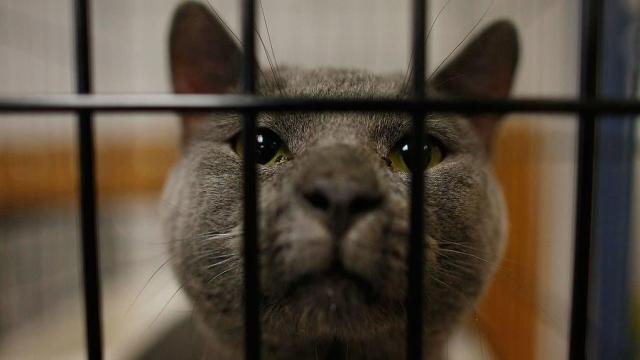When a wildfire, flood, or storm strikes a community, the damage is far-reaching: Homes and infrastructure may be destroyed, people are forced to evacuate, and pets are sometimes lost or left behind.
A study published this week in PLOS Climate found that the number of cats and dogs in shelters near climate-related disasters spikes for up to a year after the event. Researchers looked at data from the Federal Emergency Management Agency (FEMA) and Shelter Animals Count (SAC) to make the connection between these disasters and the surge in shelter animals.
Heidi Brown, an associate professor of public health at the University of Arizona, said that, as a dog owner, she wanted to learn more about how pets were being affected by climate disasters. “When people are struggling, they’re struggling with their animals,” she said. “When we think about cities and states adapting and preparing for disasters, what do we see in terms of actually integrating human and animal responses to that?”
Brown analysed data from FEMA and SAC from 2013 to 2018. The counties studied are ones that requested federal aid after hurricanes and fires during that time. The type of disaster affected dog and cat numbers in shelters differently. After hurricanes, shelters saw an influx of dogs, starting the month of the storm and continuing for a year after. After fires, shelters saw a sharp increase in cats, as well as a rise in the number of cats euthanised. It’s possible, the study suggests, that cats are more likely to be injured enough to warrant euthanasia after a wildfire.
“Naively, I’m a dog owner. I don’t have a cat. I was surprised about the effects of fire with cats,” Brown said. “Cats have hide instinct, and dogs have more of the run response … understanding about the context in which these things are happening is extremely important.”
There are some protections for people who are trying to evacuate from disaster zones with pets. The Pets Evacuation and Transportation Standards, or PETS Act, was passed in 2006 after Hurricane Katrina. The act requires pets to be considered in evacuation plans, but many counties across the U.S. still lack effective plans that account for different types of animals. And according to the CDC, some Red Cross evacuation centres don’t allow animals inside.
The study argues that pets be considered in evacuation plans for their own safety and for the mental wellness of the people who own them. In the study’s introduction, researchers referenced a 2017 report in which pet owners were found to have lower levels of PTSD than non-pet owners during and after natural disasters. “They’re so important for our mental health as we’re dealing and responding [to emergencies],” Brown said. “There’s people that will make the choice, and have in the past, between saving themselves or waiting with their animals.”
